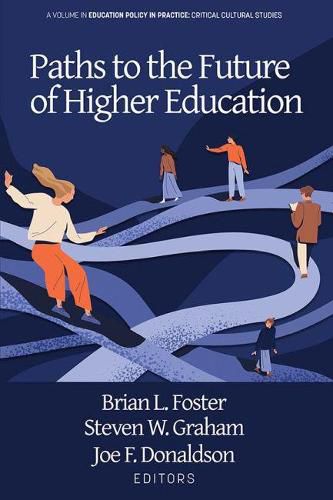Readings Newsletter
Become a Readings Member to make your shopping experience even easier.
Sign in or sign up for free!
You’re not far away from qualifying for FREE standard shipping within Australia
You’ve qualified for FREE standard shipping within Australia
The cart is loading…






This title is printed to order. This book may have been self-published. If so, we cannot guarantee the quality of the content. In the main most books will have gone through the editing process however some may not. We therefore suggest that you be aware of this before ordering this book. If in doubt check either the author or publisher’s details as we are unable to accept any returns unless they are faulty. Please contact us if you have any questions.
The rapid change that higher education is undergoing is impacting all of the core mission elements: teaching and learning, research, service, and engagement with the external world (e.g., community engagement and health care delivery). Navigating this environment requires understanding of the underlying dynamics, with particular attention to how the issues are affecting the directions higher education will take. The main focus of the book is on teaching and learning (Section 3), with Sections 1 and 2 providing important context for understanding dynamics affecting how we can achieve our goals in teaching and learning. The section on Institutional Culture, Structure, and Public Engagement addresses issues such as promotion and tenure, interdisciplinary collaboration, dissemination and archiving of research outcomes and data, student engagement with community development, and evaluation of research projects. Section 2 on Diversity, Equity, and Inclusion goes far beyond the usual diversity discussion to include addressing faculty racial disparities, intersectionality, and parity in participation. Then, Section 3, Teaching and Learning focuses on out-of-the classroom teaching and on technology enhanced learning, all with many connections to Sections 1 and 2.
The intended audience includes both academics and professionals (e.g., faculty and students in departments of higher education, anthropology, and education policy). Higher education leaders, administrators, governing board members, and many others will find the book helpful in providing insight into the future of higher education, especially as it concerns instruction and learning. The book will also be of use to professionals outside higher education who work on policy issues, on meeting the needs of employers, and on preparing students for applying knowledge in their personal lives.
$9.00 standard shipping within Australia
FREE standard shipping within Australia for orders over $100.00
Express & International shipping calculated at checkout
This title is printed to order. This book may have been self-published. If so, we cannot guarantee the quality of the content. In the main most books will have gone through the editing process however some may not. We therefore suggest that you be aware of this before ordering this book. If in doubt check either the author or publisher’s details as we are unable to accept any returns unless they are faulty. Please contact us if you have any questions.
The rapid change that higher education is undergoing is impacting all of the core mission elements: teaching and learning, research, service, and engagement with the external world (e.g., community engagement and health care delivery). Navigating this environment requires understanding of the underlying dynamics, with particular attention to how the issues are affecting the directions higher education will take. The main focus of the book is on teaching and learning (Section 3), with Sections 1 and 2 providing important context for understanding dynamics affecting how we can achieve our goals in teaching and learning. The section on Institutional Culture, Structure, and Public Engagement addresses issues such as promotion and tenure, interdisciplinary collaboration, dissemination and archiving of research outcomes and data, student engagement with community development, and evaluation of research projects. Section 2 on Diversity, Equity, and Inclusion goes far beyond the usual diversity discussion to include addressing faculty racial disparities, intersectionality, and parity in participation. Then, Section 3, Teaching and Learning focuses on out-of-the classroom teaching and on technology enhanced learning, all with many connections to Sections 1 and 2.
The intended audience includes both academics and professionals (e.g., faculty and students in departments of higher education, anthropology, and education policy). Higher education leaders, administrators, governing board members, and many others will find the book helpful in providing insight into the future of higher education, especially as it concerns instruction and learning. The book will also be of use to professionals outside higher education who work on policy issues, on meeting the needs of employers, and on preparing students for applying knowledge in their personal lives.